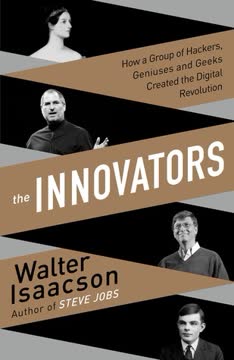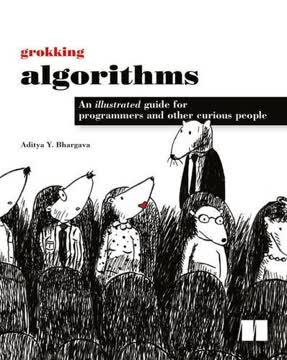Key Takeaways
1. Software quality demands rigorous testing and dedicated testers
For the latest version of CityDesk, the website management software published by my company Fog Creek Software, we decided to do everything internally in UCS-2 (2 byte) Unicode, which is what Visual Basic, COM, and Windows NT/2000/XP use as their native string type.
Comprehensive testing is crucial. Rigorous testing, including usability tests and automated crash reporting, is essential for ensuring software quality. Dedicated testers, ideally one for every two programmers, should be an integral part of the development team. Their role is to identify bugs, validate functionality, and ensure a smooth user experience.
Automated crash reporting is invaluable. Implementing systems that automatically collect and report crashes from users in the field can provide invaluable data for improving software quality. This approach allows developers to identify and fix issues that may not be apparent during in-house testing.
Unicode implementation example:
- Chose UCS-2 (2 byte) Unicode for internal operations
- Aligned with Visual Basic, COM, and Windows NT/2000/XP native string types
- Converted to UTF-8 encoding for web publishing
- Resulted in seamless support for 29 language versions of Joel on Software
2. Effective project management requires detailed, flexible specifications
If you're writing a program, say, a word processor, and you want to display a menu or write a file, you have to ask the operating system to do it for you, using a very specific set of function calls that are different on every operating system.
Detailed specifications are crucial. Writing comprehensive, detailed specifications before coding begins is essential for effective project management. These specs should outline the desired functionality, user interface, and technical requirements of the software.
Flexibility is key. While specs provide a roadmap, they should be living documents that can be updated as the project evolves. Regular review and revision of specs ensure they remain relevant and aligned with project goals.
Key elements of effective specs:
- Clear description of features and functionality
- User interface mockups or wireframes
- Technical requirements and constraints
- Timeline and milestones
- Resource allocation
- Risk assessment and mitigation strategies
3. Hiring and cultivating top talent is crucial for software development success
Smart companies try to commoditize their products' complements.
Hiring strategy is critical. Recruiting and retaining top talent is essential for software development success. Companies should focus on hiring smart, motivated individuals who can adapt to new technologies and solve complex problems.
Continuous learning is vital. Encouraging a culture of continuous learning and improvement helps keep the development team sharp and up-to-date with the latest technologies and best practices.
Key hiring and talent cultivation strategies:
- Rigorous interview processes that test problem-solving skills
- Competitive compensation packages
- Opportunities for professional development and growth
- Creating a positive work environment that fosters creativity and innovation
- Regular code reviews and knowledge sharing sessions
- Encouraging participation in open source projects or industry conferences
4. User interface design should prioritize simplicity and user experience
A hallway usability test is where you grab the next person that passes by in the hallway and force them to try to use the code you just wrote.
Simplicity is key in UI design. User interfaces should be intuitive and easy to use, prioritizing user experience over complex features. Regular usability testing, including informal "hallway" tests, can provide valuable insights into how users interact with the software.
Iterative design process is crucial. UI design should be an iterative process, with frequent user feedback incorporated into subsequent versions. This approach helps ensure that the final product meets user needs and expectations.
Effective UI design strategies:
- Conduct regular usability tests with diverse user groups
- Use paper prototypes for early-stage design feedback
- Implement consistent design patterns across the application
- Prioritize accessibility for users with disabilities
- Regularly analyze user behavior data to inform design decisions
- Strive for a balance between functionality and simplicity
5. Strategic business decisions shape software development trajectories
If it's a core business function—do it yourself, no matter what.
Core competencies should be in-house. Companies should focus on developing and maintaining their core business functions internally, rather than outsourcing them. This approach ensures control over critical aspects of the business and fosters innovation.
Strategic partnerships can be beneficial. For non-core functions, strategic partnerships or outsourcing can be effective ways to access specialized expertise or reduce costs.
Key considerations for strategic decisions:
- Identify and protect core business functions
- Evaluate potential partnerships or acquisitions for complementary technologies
- Consider the long-term implications of technology choices
- Balance the need for innovation with maintaining existing products
- Regularly reassess the competitive landscape and adjust strategies accordingly
- Invest in research and development to stay ahead of market trends
6. Effective communication is essential in software development teams
Programmers are, in their hearts, architects, and the first thing they want to do when they get to a site is to bulldoze the place flat and build something grand.
Clear communication is crucial. Effective communication within development teams and with stakeholders is essential for project success. This includes clearly articulating project goals, technical requirements, and potential challenges.
Managing expectations is important. Regularly updating stakeholders on project progress and potential issues helps manage expectations and build trust. This is particularly important when dealing with complex technical concepts that non-technical stakeholders may not fully understand.
Strategies for effective communication:
- Regular team meetings and status updates
- Clear documentation of decisions and rationales
- Use of visual aids (diagrams, mockups) to explain complex concepts
- Encouraging open dialogue and constructive feedback
- Establishing clear channels for reporting issues or concerns
- Tailoring communication style to the audience (technical vs. non-technical)
7. Continuous learning and adaptation are key in the rapidly evolving tech industry
Nothing is as simple as it seems.
Embrace continuous learning. The tech industry evolves rapidly, making continuous learning and adaptation essential for staying relevant. Developers and managers should actively seek out new knowledge and skills.
Be prepared for complexity. Even seemingly simple tasks can have hidden complexities. Approaching problems with a mindset that anticipates challenges can lead to more robust solutions.
Strategies for continuous learning and adaptation:
- Encourage experimentation with new technologies
- Allocate time for learning and professional development
- Foster a culture that values knowledge sharing
- Stay informed about industry trends and emerging technologies
- Regularly reassess and update development processes and tools
- Embrace failure as a learning opportunity
8. Understanding market dynamics is crucial for software product success
The idea of advertising is to lie without getting caught.
Market awareness is crucial. Understanding market dynamics, including customer needs, competitor strategies, and industry trends, is essential for software product success. This knowledge should inform product development and marketing strategies.
Honest value proposition is key. While the quote humorously refers to advertising, it's crucial to develop a clear, honest value proposition for your product. This helps build trust with customers and creates a sustainable competitive advantage.
Key aspects of market understanding:
- Regular customer feedback and market research
- Competitive analysis to identify gaps and opportunities
- Tracking industry trends and technological advancements
- Adapting product strategies based on market insights
- Developing a unique selling proposition that resonates with target customers
- Balancing short-term market demands with long-term product vision
9. Open source and proprietary software models each have distinct advantages
Most of the companies spending big money to develop open source software are doing it because it's a good business strategy for them, not because they suddenly stopped believing in capitalism and fell in love with freedom-as-in-speech.
Open source has strategic value. Many companies invest in open source software as part of their business strategy, not just for altruistic reasons. This approach can help create ecosystems, drive adoption, and reduce development costs.
Proprietary software retains importance. Despite the growth of open source, proprietary software remains crucial in many sectors, particularly for specialized or mission-critical applications.
Considerations for open source vs. proprietary software:
- Evaluate the strategic benefits of open source contributions
- Consider the potential for community-driven innovation and bug fixing
- Assess the impact on your business model and revenue streams
- Balance the need for control with the benefits of open collaboration
- Understand the licensing implications of using open source components
- Consider the long-term sustainability of both approaches in your market
Last updated:
FAQ
What's Joel on Software about?
- Focus on Software Development: Joel on Software is a collection of essays by Joel Spolsky that explores various facets of software development, management, and design.
- Diverse Topics: It covers a wide range of subjects, from choosing programming languages and writing functional specifications to managing developers and understanding software culture.
- Accessible Style: The essays are written in a conversational tone, making complex topics more relatable and easier to understand for readers at all levels of expertise.
Why should I read Joel on Software?
- Practical Advice: The book offers actionable insights that can improve your software development practices and team management, based on real-world experiences.
- Understanding Software Culture: It provides a deeper understanding of the software industry and cultural differences between programming environments, aiding career navigation.
- Engaging Read: Spolsky's humorous and engaging writing style ensures that you not only learn but also enjoy the reading experience.
What are the key takeaways of Joel on Software?
- The Joel Test: A simple checklist of twelve criteria to assess whether a software team is well-managed, including practices like using source control.
- Importance of Specifications: Emphasizes the necessity of writing functional specifications to align team members and prevent misunderstandings.
- Hiring the Right People: Discusses the importance of hiring smart programmers and provides guidance on conducting effective interviews.
What is "The Joel Test" and why is it important?
- Twelve Criteria: Consists of twelve yes/no questions that assess the health of a software team, such as using source control and having a bug database.
- Quick Assessment: Allows managers to quickly evaluate their team's practices and identify areas for improvement.
- Benchmark for Success: Serves as a benchmark for teams striving for excellence, highlighting the need for better practices in software development.
How does Joel Spolsky suggest choosing a programming language?
- Consider Project Requirements: The choice should be based on project needs rather than personal preference, considering factors like speed and platform compatibility.
- Evaluate Trade-offs: Discusses trade-offs between languages, such as the speed of C versus the ease of use of Visual Basic.
- Avoid Syntax Obsession: Emphasizes that syntax should not be the primary reason for choosing a language; practical considerations are more important.
What is the significance of writing functional specifications according to Joel Spolsky?
- Design Clarity: Helps clarify the design and functionality of the software before coding begins, reducing misunderstandings.
- Communication Tool: Serves as a communication tool between developers, testers, and stakeholders, ensuring alignment.
- Cost-Effective: Argues that failing to write specifications can lead to increased costs and delays due to rework and miscommunication.
How does Joel Spolsky recommend managing developers effectively?
- Empowerment and Trust: Emphasizes empowering developers and trusting them to do their jobs without micromanagement.
- Clear Expectations: Setting clear expectations and providing necessary resources and support is crucial for success.
- Regular Feedback: Advocates for regular feedback and open communication to address issues promptly and keep the team aligned.
What are the common pitfalls in software development that Joel Spolsky highlights?
- Ignoring User Feedback: Warns against neglecting user feedback, which is essential for creating software that meets market demands.
- Overcomplicating Solutions: Cautions against overengineering, which can lead to unnecessary complexity and maintenance challenges.
- Underestimating Testing: Stresses the importance of thorough testing and quality assurance to avoid buggy software.
How does Joel Spolsky view the relationship between programmers and management?
- Different Skill Sets: Points out that programmers and managers possess different skill sets and should not be expected to excel in each other's domains.
- Mutual Respect: Advocates for mutual respect between programmers and management, emphasizing the importance of both roles.
- Avoiding Micromanagement: Warns against micromanagement, which can stifle creativity and productivity among developers.
What is the role of daily builds in software development according to Joel Spolsky?
- Continuous Integration: Facilitates continuous integration, allowing teams to catch issues early and maintain code quality.
- Immediate Feedback: Provides immediate feedback to developers about the state of the codebase, enabling quick issue resolution.
- Team Accountability: Creates a culture of accountability, encouraging careful coding practices and collaboration.
How does Joel Spolsky define multitasking in programming?
- Negative Impact on Productivity: Argues that multitasking can lead to decreased productivity, especially in tasks requiring deep focus.
- Task Switching Costs: Explains that time lost during task switching can accumulate, resulting in significant delays.
- Recommendation for Focus: Recommends focusing on one task at a time to maximize efficiency, with management minimizing interruptions.
What are the dangers of rewriting code from scratch according to Joel Spolsky?
- Loss of Knowledge: Warns that rewriting code can lead to the loss of valuable knowledge embedded in the existing codebase.
- Increased Risk: Highlights that starting over introduces new risks, as the new code may not perform as well as the original.
- Market Leadership Risks: Discusses how companies that rewrite software often lose their competitive edge by delaying product delivery.
Review Summary
Joel on Software is a collection of essays on software development, project management, and industry insights. Readers appreciate Spolsky's pragmatic advice, humor, and real-world experiences. The book covers topics like bug tracking, specs, hiring, and productivity. While some content is dated, many principles remain relevant. Critics note Microsoft bias and outdated predictions. Most reviewers found value in Spolsky's perspectives on software engineering practices, even if they disagreed with some points. The book is recommended for its blend of technical knowledge and management wisdom.
Joel On Software Series
Similar Books










Download PDF
Download EPUB
.epub digital book format is ideal for reading ebooks on phones, tablets, and e-readers.





